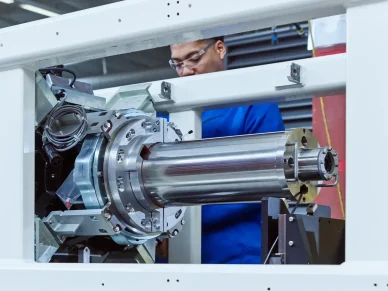Rethinking supply chains in the metaverse

The metaverse is where the physical and virtual worlds meet. That makes it a perfect vehicle for improving supply chains, where planning in virtual environments leads to execution on a large scale across the globe. Before organizations set their global wheels in motion, they want to set a plan of action that will yield optimal results. The metaverse can help them do that, and it can help them make adjustments on the fly, something that hasn’t been logistically possibly until now. Here’s how the metaverse is making supply chains truly phygital.
Visibility & Collaboration
The metaverse can house virtual twins, digital replicas of key points along the supply chain, including factories, warehouses, and shipping routes. These give instant insight into inventory levels, production capacity, and delivery timelines. Marked with IoT sensors and governed by blockchain smart contracts relying on edge computing, individual product units can mark their locations, spur automatic replenishment, and trigger price adjustments in real time to fit demand. As demand rises, people are willing to pay more for a product, but if companies can’t respond to that in real time, they miss the opportunity to maximize revenue.
In virtual meeting rooms, stakeholders across supply chains can meet to walk through all links in the chain, sharing their input on the best approaches to logistical problems and make sure everyone is on the same page. This works well for both initial planning stages and making adjustments in real time to unclog bottlenecks and make better-informed decisions.
Simulations

With other stakeholders present via metaverse, supply chain teams can run virtual simulations of various scenarios, from port closures to material shortages. With an idea of how each disruption can affect operations, they can design dozens of contingency plans using stakeholder input, then put those plans into action instantly in the event they’re necessary. DHL and IBM are two industry leaders that use VR simulations to game out supply disruption scenarios. “Create continuous supply chain plans and monthly, daily, or hourly forecasts,” IBM advises. “Get real-time visibility into disparate data sources for better operational efficiency and insights so you can adapt to dynamic customer demand.” Performing these simulations in a virtual environment avoids disrupting current supply chain operations and costs a lot less time and money than running test operations in physical warehouses and factories.
Efficiency & Optimization
What all these simulations, combined with massive amounts of live data, can also do is predict shifts in the market and areas of potential vulnerability based on demand changes. Old data only tells organizations how to be successful in the past. But combine it with current data, and it provides useful context for where the market is going. Predictive analytics can then generate much more accurate forecasts. This gives a clearer picture of demand and allows supply chains to adjust inventory and production levels to meet it. With relevant stakeholders able to hop into virtual meeting rooms within the metaverse, potential issues that a sudden surge in demand can bring can be resolved quickly, with all parties benefitting from increased sales and customer experience kept at a high level.
“This connectivity will make the end-to-end chain visible and responsive, incorporating crystal clear and efficient cost negotiations among vendors and buyers,” Dave Food, head of supply chain marketing at Board International, wrote. “With wide-ranging collaboration and more in-depth production-optimized strategies, the co-managed margins for production errors will lead to better-quality products and services and reduce customer return rates.”
Marketing & Innovation

One of the best aspects of the phygital world the metaverse creates is the ability to provide immersive experiences without traveling to an audience. Coca-Cola has long been using interactive VR marketing and has created thousands of metaverse collectibles, ranging from NFTs to games and even “virtual reality soda,” shared Sugar Byte. The metaverse marketing campaign helped boost sales by 12% in 2022 compared to the previous year. The metaverse can also facilitate virtual product demonstrations. Nike’s .Swoosh metaverse platform can showcase virtual replicas of shoes and clothing, plus host exclusive events where guests can get a sneak peek at new items and even design their own.
“We are shaping a marketplace of the future with an accessible platform for the web3-curious,” Nike marketing executive Ron Faris told Design Rush. “In this new space, the .Swoosh community and Nike can create, share, and benefit together.”














Leave a Reply